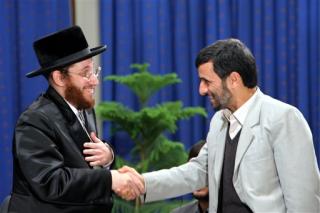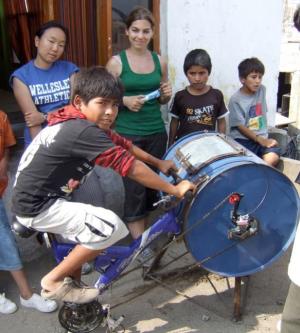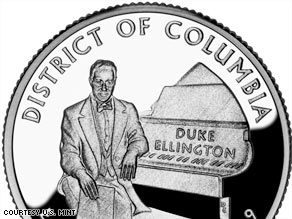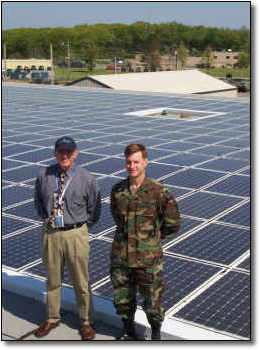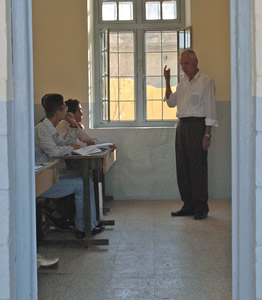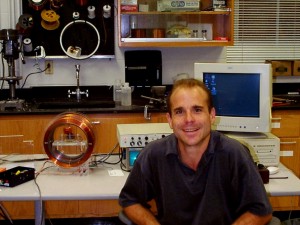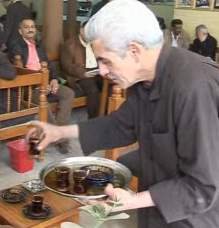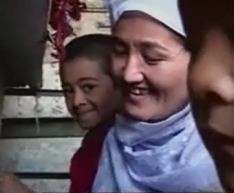 More than 106 million of the world’s poorest families received a microloan in 2007, surpassing a goal set ten years earlier, according to a report released last month by the Microcredit Summit Campaign. Microloans are used to help people living in extreme poverty start or expand a range of tiny businesses such as husking rice, selling tortillas, and delivering cell phone services to remote villages.
More than 106 million of the world’s poorest families received a microloan in 2007, surpassing a goal set ten years earlier, according to a report released last month by the Microcredit Summit Campaign. Microloans are used to help people living in extreme poverty start or expand a range of tiny businesses such as husking rice, selling tortillas, and delivering cell phone services to remote villages.
“This is a tremendous achievement that many people thought was far too difficult to reach,” said Nobel Peace Prize laureate and Grameen Bank founder Muhammad Yunus who was present for the announcement. “What makes it even more remarkable is that loans to more than 100 million very poor families now touch the lives of more than half a billion family members around the world. That is half of the world’s poorest people.”
Even though microloans were first made in the developing world in the 1970s, for decades, this quiet revolution gained ground largely unnoticed by world leaders and development specialists until the United Nations declared 2005 as the Year of Microcredit and the following year Muhammad Yunus and Grameen Bank received the Nobel Peace Prize.
At the first Microcredit Summit in 1997, when the ambitious goal was originally set, organizers say that fewer than 8 million very poor clients had a microloan. That number grew by more than 1,300 percent in the ten years that followed, culminating in 2007, when microloans went to 88 million of the world’s poorest women.
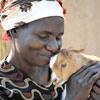 The Campaign organized 12 conferences during that period, attended by more than 14,000 delegates examining trends, debating ideas, and sharing innovations. “Spending less than $12 million, the amount of microloans in the hands of the poor expanded from an estimated $1 billion to $15 billion,” said Alex Counts, President and CEO of Grameen Foundation, “demonstrating the significant leverage possible when an international campaign is able to mobilize people and institutions on a global scale.”
The Campaign organized 12 conferences during that period, attended by more than 14,000 delegates examining trends, debating ideas, and sharing innovations. “Spending less than $12 million, the amount of microloans in the hands of the poor expanded from an estimated $1 billion to $15 billion,” said Alex Counts, President and CEO of Grameen Foundation, “demonstrating the significant leverage possible when an international campaign is able to mobilize people and institutions on a global scale.”
While the world’s financial markets are gripped by a global economic crisis, microbanking has spread to the most destitute corners of the world, spurred by internet websites like Kiva.org which lets users lend small amounts directly to micro-businesses — with payback rates that traditional banks would envy.
From Beggar to Home Owner
One of the innovators highlighted in the report is Jamii Bora, a Kenyan microfinance institution that started in 1999 with loans to 50 beggars in Mathare Valley Slum in Nairobi and now reaches 200,000 members. Jamii Bora is building a new town that provides another contrast to the current financial crisis by providing sub-prime mortgages to some of the poorest people in the world but does so in a way that gets the fundamentals right. The new town has 2,000 houses and 3,000 business spaces. Each house has two bedrooms, a kitchen, a living room, and a bathroom and the monthly mortgage is the same as a one-room shack in the slums. Potential buyers must have successfully repaid three self-employment loans to qualify for a mortgage. “Every person’s dream is to move out of the slums,” said Jamii Bora’s founder Ingrid Munro, “not patch up the slums.”
Jorimon Khan, who lives in Bangladesh, is one of the clients mentioned in the report. Married in 1962 at the age of 10, Jorimon had her first child at 15. Her family of four lived on her husband’s wages as a day laborer which amounted to less than 20 cents a day. In 1980 she received her first loan of $10 from Grameen Bank and began to husk and sell rice. For the first time in her life, Jorimon Khan and her family were able to eat three meals a day. “At first I was afraid to take the loan,” Khan remembered. “People told me that if I didn’t repay it, the bank people would kill me for the money. So yes, I was very scared. But when I finally paid back that first $10, I felt brave. So I asked for more money. After that I asked for $33.”
In 1980 Jorimon Khan was among the first 10,000 microfinance clients in the developing world. Now Jorimon Khan is one of more than 100 million clients and the Microcredit Summit has set its sights on reaching 175 million of the world’s poorest families by 2015 and ensuring that 100 million of those families move above the $1 a day threshold. (The Campaign counts the world’s poorest as those who live in the bottom half of those living below their nation’s poverty line, or any of the nearly 1 billion people living on less than $1.25 a day.)
Click here to view the 2009 State of the Campaign Report (Also available in Spanish, French, and Arabic).
The Microcredit Summit Campaign is a project of the RESULTS Educational Fund, a U.S.-based grassroots advocacy organization committed to ending hunger and poverty. The Campaign brings together microcredit practitioners, advocates, educational institutions, donor agencies, international financial institutions, non-governmental organizations and others involved with microcredit to promote best practices in the field, to stimulate the interchanging of knowledge, and to work towards reaching bold measurable goals. For more information, visit www.microcreditsummit.org.
 Typically women use 20 percent of their clothes 80 percent of the time. The reason? Sometimes it’s just hard to let go. But, the idea to host clothing swaps between friends or local women is gaining momentum. Suzanne Agasi is the diva of clothing swaps having hosted 175 events while maintaining a website devoted to her events www.clothingswap.org.
Typically women use 20 percent of their clothes 80 percent of the time. The reason? Sometimes it’s just hard to let go. But, the idea to host clothing swaps between friends or local women is gaining momentum. Suzanne Agasi is the diva of clothing swaps having hosted 175 events while maintaining a website devoted to her events www.clothingswap.org.





















 The Campaign organized 12 conferences during that period, attended by more than 14,000 delegates examining trends, debating ideas, and sharing innovations. “Spending less than $12 million, the amount of microloans in the hands of the poor expanded from an estimated $1 billion to $15 billion,” said Alex Counts, President and CEO of Grameen Foundation, “demonstrating the significant leverage possible when an international campaign is able to mobilize people and institutions on a global scale.”
The Campaign organized 12 conferences during that period, attended by more than 14,000 delegates examining trends, debating ideas, and sharing innovations. “Spending less than $12 million, the amount of microloans in the hands of the poor expanded from an estimated $1 billion to $15 billion,” said Alex Counts, President and CEO of Grameen Foundation, “demonstrating the significant leverage possible when an international campaign is able to mobilize people and institutions on a global scale.”

